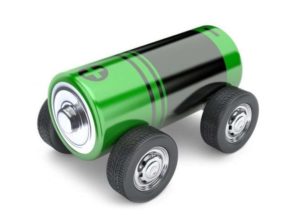WE HAVE LISTED ADVANTAGES AND DISADVANTAGES OF ELECTRIC CARS

ACCELERATION
With the same power used, an electric car has greater acceleration than a combustion vehicle. The difference lies in the supply of the drive torque which in an electric motor is totally available from start up instead in an endothermic engine it is very low in the first few turns, it goes up to the maximum value in a relatively narrow arc of turns, then collapses.
SIMPLICITY OF CONSTRUCTION
An electric motor is more compact, with the same power, compared to an endothermic engine. The gearbox is not needed, the moving mechanical parts subject to wear or breakage are almost absent, as are the relative lubrication systems.
CONSUMPTION
1 liter of petrol corresponds to 8.90kWh. Calculating the cost of energy on the fixed tariff of the Enel Drive columns, or € 0.40 / kWh, the cost per km of the various electric car models varies from € 0.088 to € 0.035 / Km. To be clear, for example, let’s take a petrol car that covers 100km with 8 euros of gasoline, we will get a cost of 0.080 € / km. The same car converted to LPG will cost € 0.050 / Km, at € 0.035 € / Km. So with the current Enel Drive electricity tariff there is no clear economic savings for electric car owners. On the contrary, charging the car at home via a slow-loading Wall Box will cost € 0.025 per km traveled. It can therefore be deduced that with the current electricity tariffs a clear advantage is obtained only by using a slow recharge at home but taking into account the extra costs due to the often necessary increase of the Kw of the domestic system and to the installation of a Wall Box for recharging.
BATTERY
The current lithium technology does not allow us to obtain a range that is comparable to traditional vehicles. Today a reasonably priced electric car rarely manages to exceed 250 km on one charge. To go further it is necessary to increase the number of battery cells, aggravating the vehicle by a huge weight and making the price rise considerably. If the weight increases, the demand for energy to transport it also increases; a vicious circle.
RECHARGE INFRASTRUCTURE
The public and private columns are constantly increasing, but they are still few and concentrated in the big cities. Continental and national projects are being implemented to create a network of charging stations along the main highways, but this will also take time.
RECHARGING TIMES
The ultra-fast (few) recharging columns allow you to accumulate enough energy in about 30 minutes for 80% of the capacity. But half an hour to do the “full” is a huge time, compared to 2-3 minutes of a traditional supply. Given the scarcity of stations installed, if you find the column occupied you have to wait for your turn or waste energy to look for another one, perhaps very far away. Or you need to spend several hours connecting to the home socket.
HOME SOCKETS
It is not necessary to carry out interventions or ask for authorizations. However, if the installed power is low (3 kW like most Italian homes), the meter could be overloaded. So it may become necessary to ask the electricity supplier for a power adjustment. This would obviously involve a higher expense. In addition, normal outlets could easily overheat. For this reason it is almost essential to install a wall box.
WEIGHT
Electric cars are much heavier than traditional ones, precisely because of the battery. Example: the Renault Zoe (length 408 cm) weighs 1,480 kg with the largest battery; the Clio (406 cm) diesel of the same power weighs 1,235 Kg, the petrol one 1,165 Kg.
TEMPERATURE MANAGEMENT
The useful operating temperature is very restricted, from 25 to 45 ° C. To maintain it, very complex cooling systems are used. This sets limits in maintaining sustained strides for prolonged times. It is also for this reason that the maximum speeds of electric cars with non-stellar prices are electronically kept very low. The cold should not be underestimated: autonomy in the more rigid winter months can be reduced by a third.
HIGH PRICES
Electric cars have very high prices compared to traditional cars of corresponding power. Why? Once again because of the batteries. Currently their cost travels approximately around $ 200 per kWh. To have an autonomy of at least 250 km real need about 40 kWh, then 8,000 dollars more than a non-electric car.
ENERGY PRODUCTION
The primary sources for the production of electricity are natural gas, renewable sources, coal, nuclear, petroleum products. Every state in the world uses these sources in different percentages. Renewable sources are not magical or inexhaustible, despite the name. Sun and wind make up a small part of it; the big one do it instead the hydroelectric plants, already exploited to the maximum. To cope with an increase in demand, we should therefore resort further to gas, coal and nuclear energy in particular. Therefore the complete circle of environmental sustainability would no longer be so favorable.
RAW MATERIAL
The main raw materials for making batteries are lithium and cobalt, both substances under the control of China that obviously will manage them at will. As for Cobalt, the world’s largest producer is the Democratic Republic of the Congo, in whose mines children who work in inhumane conditions are often used.
LITHIUM BATTERY FIRE
Examining the cases of fires on electric vehicles, it is easy to see how one of the main problems is the re-ignition of the fire even after several apparently successful shutdown attempts. Once the fire is extinguished, the energy stored inside them remains. A system that is not completely discharged can therefore generate important electrocution damage and all that the fire needs to trigger, ie oxygen from the air and heat remains present on the scenario. Water cannot extinguish fire, but cools adjacent battery cells, limits the spread of flames and prevents (but does not eliminate) the risk of new triggers. This is why the safety guides of some electric cars suggest to make the batteries burn completely! Firefighters should wear appropriate respiratory protection. Battery cells may emit potentially hazardous organic vapors if exposed to excessive heat, fire, or overvoltage conditions. These vapors include HF2 carbon, aluminum, lithium, copper and cobalt oxides. Furthermore, volatile phosphorus pentafluoride can be formed at temperatures above 110 ° C.
LITHIUM BATTERY LIFE AND DISPOSAL CYCLE
Lithium batteries, just like those of a common smartphone, once they reach an efficiency level below 80% are no longer able to efficiently handle the vehicle and must therefore be replaced. Currently, on the market, these batteries have a maximum autonomy of 8 years which translates into a different mileage depending on the performance of the electric car and which varies between 100,000km and 300,000km. Replacement and warranty costs are borne by the car manufacturer but are charged to the purchaser who will find the “environmental contribution” item on the invoice. However, if the lithium battery is damaged in an accident or for any other reason not covered by the warranty, the owner of the vehicle must bear the costs of disassembly, transport and disposal. The only disposal cost varies from € 4.00 / kg to € 4.50 kg, which means that you can reach costs of € 2000 / € 3000 for each battery disposed of, in fact the management of collection and disposal in all phases it’s rather complex. Collection for security reasons must take place in very expensive dedicated boxes / boxes. Transportation must take place on vehicles with very expensive special series equipment, there are strong restrictions on air transport, by ship and by road in the event of damaged and / or defective batteries. All the collected batteries must then be concentrated in authorized storage facilities to prepare the secondary transport (with export notification) abroad (Belgium, Germany mainly) since in Italy there are no plants for the final treatment of automotive lithium batteries.

